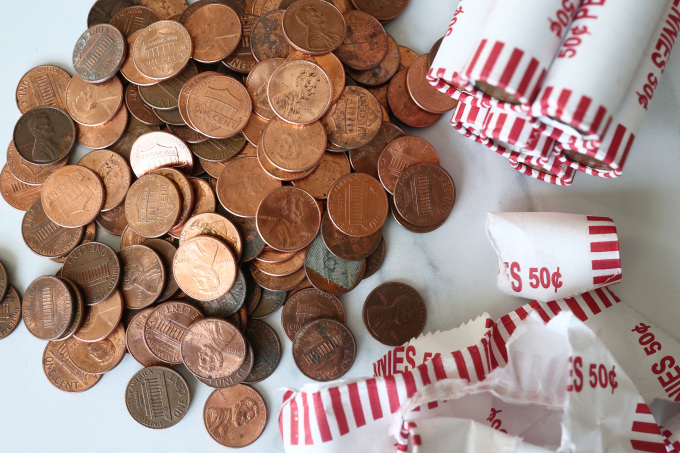
Former President Donald Trump has ordered the U.S. Treasury to stop minting the one-cent coin, citing its production cost, which exceeds its face value, and its declining use among Americans.
“For years, the U.S. has been making pennies at a cost of more than two cents each. It’s a waste of money! I have directed the Treasury Secretary to stop producing new pennies. Let’s cut waste from our great budget, one cent at a time,” Trump posted on Truth Social on February 9.
A Longstanding Debate Over the Penny
This isn’t the first time U.S. officials have considered scrapping the penny. The debate over whether to keep or eliminate the smallest denomination coin has been ongoing for decades. Former President Barack Obama also supported eliminating it during his time in office.
“The government may not save a huge amount, but whenever we spend more on something people don’t really use, it’s time for a change,” Obama said in 2013.
The first U.S. coins were minted in 1793 after Congress passed the Coinage Act to standardize currency. At the time, America used a mix of domestic and foreign coins left over from the colonial period and the Revolutionary War.
The original denominations included half-cent and one-cent coins made of copper, along with five-cent, ten-cent, quarter-dollar, half-dollar, and one-dollar coins made of silver. There were also $2.50, $5, and $10 gold coins. Over time, many of these were phased out, including the half-cent (1857), the $2.50 and $5 coins (1929), and the $10 coin (1933). More recently, in 2011, then-Vice President Joe Biden announced the U.S. would stop minting $1 coins.
Currently, the U.S. Mint produces pennies (1 cent), nickels (5 cents), dimes (10 cents), quarters (25 cents), half-dollars (50 cents), and dollar coins. The materials used have changed over time—older pennies were larger and made entirely of copper, whereas today’s pennies are smaller and consist mostly of zinc with a copper coating. Other coins are made from a copper-nickel alloy.
Why the Penny Is Under Fire
The penny remains the most widely produced coin. According to a September 2024 New York Times report, an estimated 240 billion pennies are in circulation. In 2024 alone, the U.S. Mint produced 3.2 billion pennies—57% of the total 5.61 billion coins minted that year.
Efforts to eliminate the penny date back to the late 1980s, when Arizona Republican Congressman Jim Kolbe pushed to phase out the one-cent coin. His initial motivation was to support the copper mining industry in his state by replacing the $1 bill with a $1 coin made of copper. Seeing public support for getting rid of the penny, Kolbe combined the two ideas.
Over time, Kolbe’s push to eliminate the penny became less about copper mining and more about fiscal responsibility. “It’s a sensible reform that would save the government a lot of money,” he argued.
Throughout the 1990s, Kolbe introduced bills to phase out the penny, but his proposals faced resistance—particularly from House Speaker Dennis Hastert, a congressman from Illinois, the home state of Abraham Lincoln, whose face appears on the penny. The zinc mining industry and coin suppliers also opposed the change.
Before his passing in 2022, Kolbe said he was always “baffled” by how many extra pennies he would accumulate after shopping.
Mounting Costs and Calls for Reform
Numerous lawmakers have tried to address the penny issue over the years. In 2017, Arizona Senator John McCain co-sponsored a bill to suspend penny production for ten years and direct the Government Accountability Office to study its impact. However, the legislation never advanced.
A 2024 U.S. Mint report revealed that it costs 3.69 cents to make a single penny—more than three times its face value. The production cost has exceeded the coin’s worth for 19 consecutive years. A 2014 report also noted that there is no viable alternative material that would reduce production costs below one cent.
Beyond cost concerns, critics argue that eliminating the penny would free up resources at the U.S. Mint for higher-value coins, particularly as digital payments become more dominant. In 2024, CapitalOne Shopping Research estimated that 86.9% of all transactions in the U.S. were cashless.
There are also environmental concerns. The production of pennies requires mining and refining zinc and copper, which generates significant carbon emissions. Additionally, inflation has eroded the penny’s purchasing power to the point that it has become virtually useless.
“The penny’s value has dropped so much that if you earn above minimum wage, you actually lose money by stopping to pick up a penny on the street,” said Philip Diehl, former U.S. Mint director under President Bill Clinton, who has long supported scrapping the coin.
The Case for Keeping the Penny
One reason the government mints billions of pennies each year is that many of them don’t stay in circulation. Instead, they end up in jars, drawers, or simply discarded. When people do exchange pennies, it’s often to swap them for higher-value coins—usually nickels.
Supporters of the penny argue that eliminating it could lead to rounding transactions up to the nearest five cents, effectively imposing a hidden tax on consumers. Some economists warn that low-income Americans would be most affected by this change.
Organizations like Americans for Common Cents, which represents the interests of zinc producers, coin manufacturers, and collectors, argue that Trump’s decision is flawed. They claim that shifting production focus to nickels, which also cost more than their face value to produce, could increase costs for the U.S. Mint.
Additionally, charities benefit from the penny, as people are more likely to donate small-denomination coins.
Sentimental attachment also plays a role. “I think people have an emotional connection to things they’ve always known,” Obama said in 2013. “We remember piggy banks, counting pennies, and exchanging them for a few dollars. That might be why so many people still support keeping the penny.”
(Sources: CNN, NPR, TIME)
Hello Shuttle will strive to bring the latest updates. At the end of the day.
Are you looking for reliable airport and cruise port transfer services in Los Angeles?
We offer professional, safe, and punctual transportation from
Los Angeles Airport - LAX
Long Beach Airport - LGB
John Wayne Airport - SNA
San Pedro cruise port
Long Beach cruise port
Disneyland
and other destinations.
Let us make your journey stress-free and comfortable with our dedicated drivers and high-quality vehicles. Book now for the perfect travel experience at www.helloshuttle.com or call 944-800-5678!


